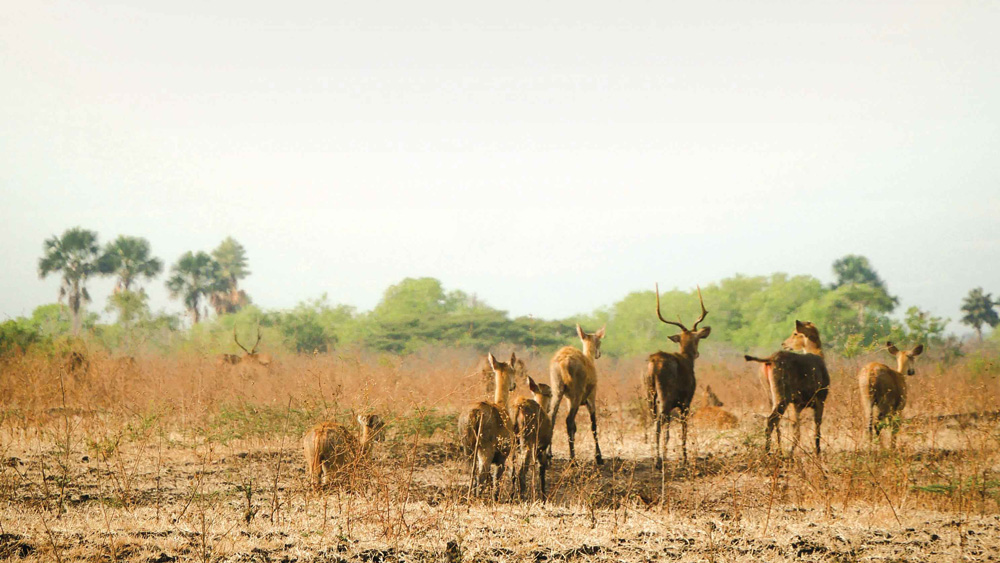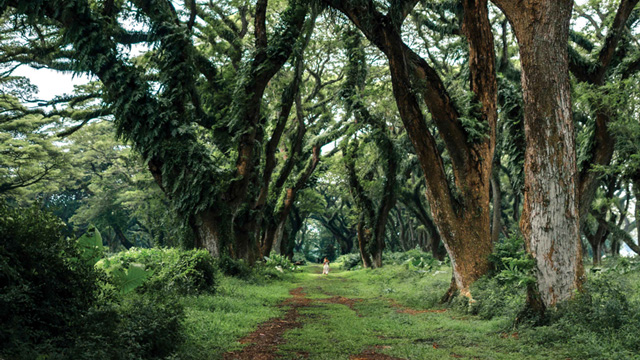Occupying most of the East Javan coastline, Banyuwangi presents a rugged landscape stretching from mountaintops to bushland plains and down to the sea. It’s a nature-lovers playground, home to three vast national parks, each wildly different and home to a variety of exotic flora and fauna. For adventure-seekers, challenging volcanic trails await, as well as one of Indonesia’s most legendary surf spots, and still yet more to see below the sea.
Truly one of the most diverse regions on the island of Java, Banyuwangi Regency is worth taking the time to explore. A direct flight from Jakarta to Banyuwangi International Airport takes you into the centre of the region, whilst a 30-minute ferry journey is available from West Bali.
For those keen to discover this accessible and impressively rich destination, here we share a highlight of the region’s most impressive destinations.

Alas Purwo National Park

Found on the southern most tip of Banyuwangi Regency, Alas Purwo National Park is truly a world within itself. Covering 43,000 hectares it encompasses a variety of different habitats, including savanna, mangrove forests, beach forests, and lowland tropical forests. The park is a haven for rare and endangered mammals such as the Asiatic wild dog, wild oxen, and leopards. Thousands of migrating birds visit its pristine forests annually, and turtles lay their eggs on its secluded beaches.
Baluran National Park

Known as the “Little Africa” of Indonesia, Baluran National Park features a savanna-like landscape with 444 species of trees. Though technically not part of Banyuwangi Regency, it is certainly one of the go-to destinations when visiting the region. Baluran National Park takes up the majority of the northeast corner of East Java, it is home to 26 mammal species, including the Java water buffalo, leopard, mouse deer, and mangrove cats, as well as 15 types of birds. The park has two main stations: Bekol, located in the middle where visitors can observe animals from a tower, and Bama, a beach area with simple accommodations.
Meru Betiri National Park

One of Java’s finest parks, Meru Betiri National Park covers 580 square kilometres of coastal rainforest and abundant wildlife. The park is known for being the natural habitat of the local Java tiger. It also conserves rare species like the Rafflesia zollingeriana flower and Javanese flying squirrels. Additionally, the park includes an 8.54 square kilometre marine area with pristine beaches, hidden beyond lush green rainforests.
Ijen Crater

We cannot talk about Banyuwangi without mentioning its most visited site, Mount Ijen. Designated as a biosphere reservation area by UNESCO in 2016, the Ijen Crater stretches over 2,560 hectares on Mount Ijen in the Licin district. Known as one of the most dangerous craters in the world, it occupies the largest caldera in Java, formed by the eruption of Mount Ijen. The caldera has a width of 6 km, a depth of 200 meters, and contains acidic turquoise water.
Of course, its is most famous for its blue flames, enticing brave hikers to venture down the crater’s slopes in the wee hours. Sulphur leaking through the cracks and gaps of these are constantly alight, but this is only visible in the dark. As such, in the dead of night, the brilliant blue fires can be seen, often described as ‘electric scenes’ as the flames zig and zag their way up the rock faces. Once the sun comes up, new scenes await, including the vibrant caldera lake, the craggy sulphur surrounds and the panoramic views of Mount Merapi, Mount Raung, Mount Rante, and other peaks. Access to the crater requires a three-hour climb from Paltuding.
Djawatan Forest

Renowned for its picturesque landscape and mystical atmosphere, the forest is characterised by its towering trembesi trees (Albizia saman) with expansive canopies, creating a natural, cathedral-like ambiance. The intertwining branches and roots of these ancient trees provide a surreal and enchanting environment, making it a popular destination for nature enthusiasts and photographers.
The forest is also part of the larger effort to promote eco-tourism and conservation in the region, highlighting the importance of preserving natural habitats and promoting sustainable tourism practices.
G-Land

G-Land, or Plengkung Beach, is an internationally renowned surfing destination located in Banyuwangi, East Java. It takes its name “G-Land” from Grajagan Bay, where the beach is located, on the Banyuwangi’s southern coast, on the fringe of Alas Purwo National Park. Known for its impressive waves, which can reach heights of up to six meters, G-Land attracts surfers from around the world looking for a challenging and exhilarating experience. The surf here is long and consistent, split into three breaks: Kongs, the outermost break with the biggest waves, suitable for experienced surfers; Money Trees, the main break that offers long rides and hollow tubes; and Speedies, a fast and challenging section that requires skill and precision.
The surf season typically runs from April to October, with the best conditions occurring during this period. Surf camps and lodges in the area provide accommodations, equipment rental, and guided surf tours for enthusiasts.
While G-Land is primarily known for surfing, the surrounding waters offer excellent opportunities for diving and snorkeling. The coral reefs around Grajagan Bay are teeming with marine life, including colorful fish, sea turtles, and more. Snorkelers can explore the shallow reefs close to the shore, while divers can venture further to discover deeper and more diverse underwater environments.
Mount Raung

An active volcano and part of the Ijen mountain range, Mount Raung has a peak that reaches 3,332 meters above sea level. It offers two popular trekking routes, via Sumber Wringin and via Kalibaru Jember. The volcano has shown signs of activity, such as in 2015 when it ejected material, causing a dust cloud.
Tabuhan Island

Found in the Bali Straits, sandwiched between Java and Bali, Tabuhan Island is a quick and easy escape off the mainland. It is visited mainly for its coastal offerings, from its white sand beaches, clear waters for snorkelling and also water sports.
The corals here boast a variety of marine life, including shellfish, sponges, crayfish, and marine plants. On land, the island also protects the endangered maleo bird, normally found only in Sulawesi, and hornbills. However, the island has become famous mainly for kiteboard and windsurfing, with a constant wind blowing between 20-25 knots across the island.
Another popular snorkelling and diving spot is Bangsring Underwater, on the Banyuwangi side of the straits, Here is a community-based marine conservation area where visitors can snorkel and dive. It features coral transplantation projects and marine life such as clownfish and other colourful species.





